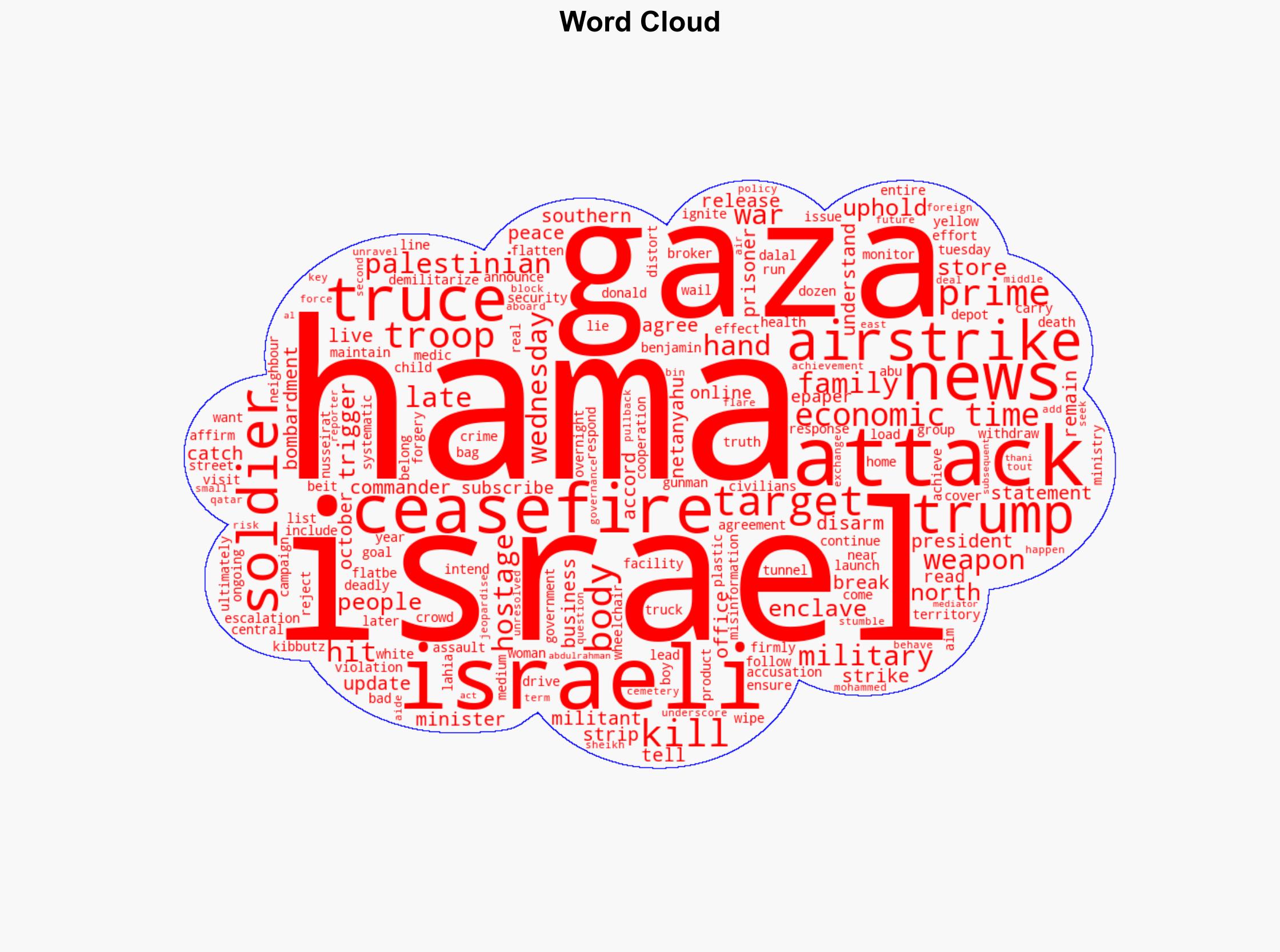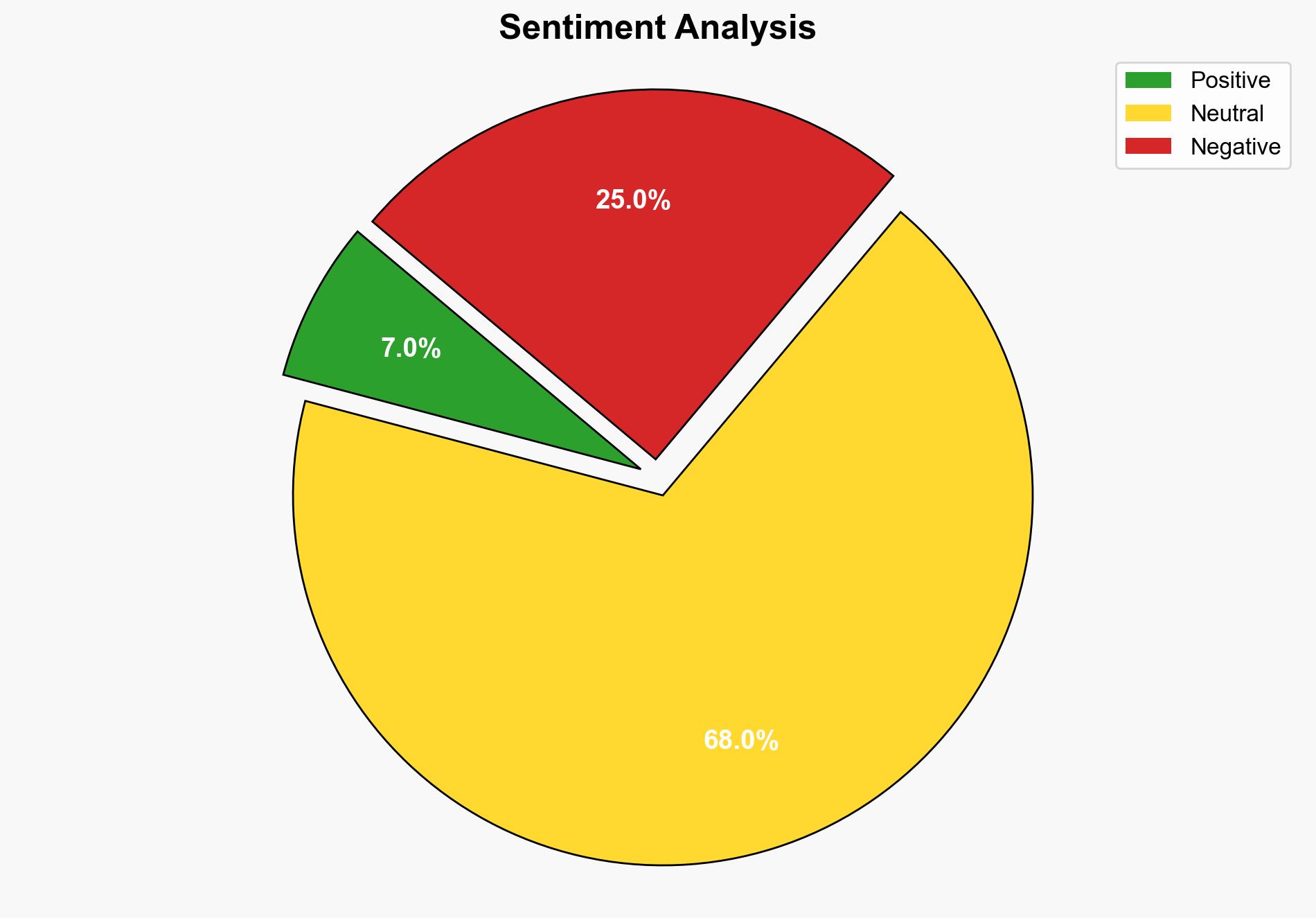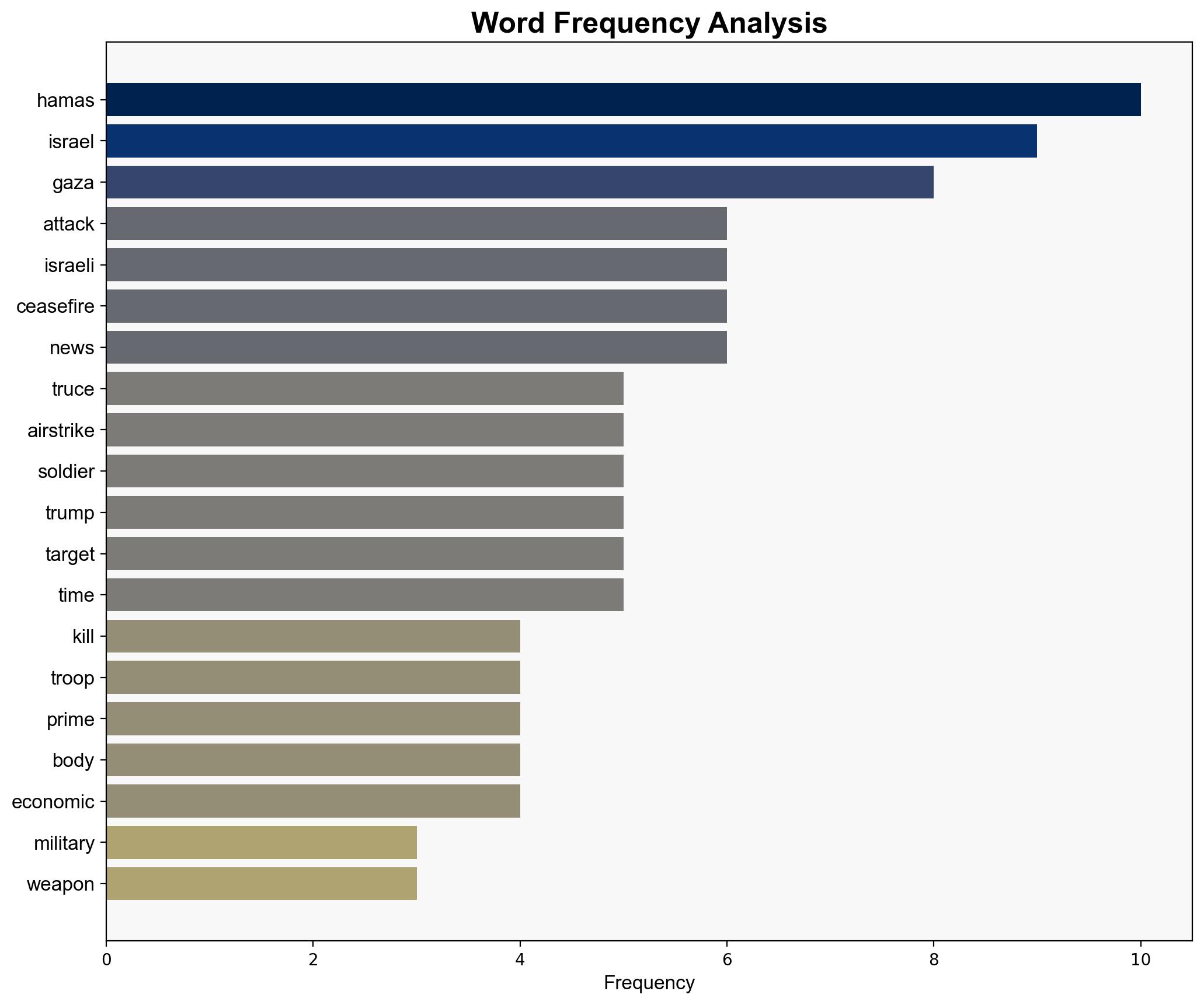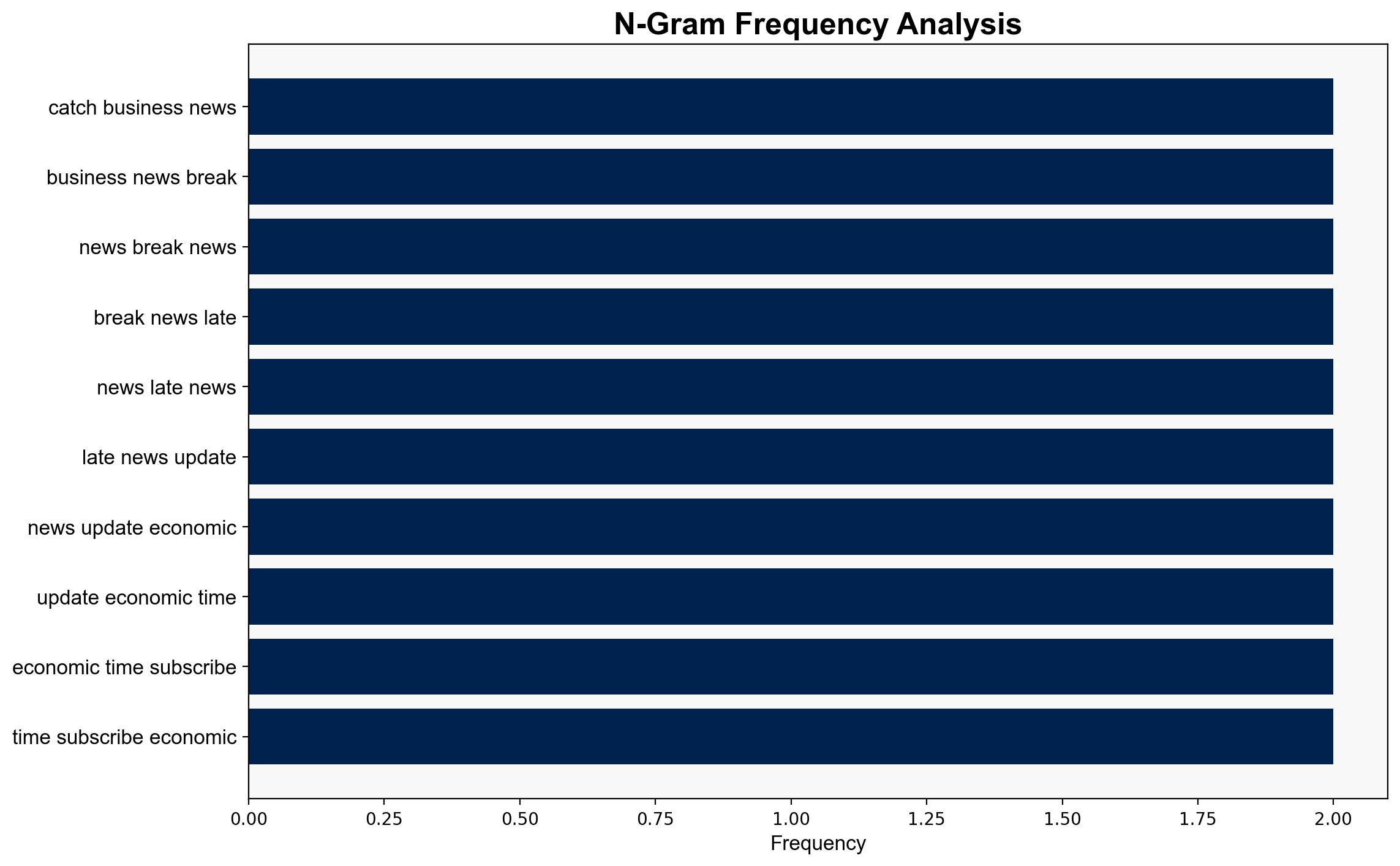Israel kills more than 100 in strikes after soldier’s death says it still backs ceasefire – The Times of India
Published on: 2025-10-30
Intelligence Report: Israel kills more than 100 in strikes after soldier’s death says it still backs ceasefire – The Times of India
1. BLUF (Bottom Line Up Front)
The most supported hypothesis is that Israel’s airstrikes are a calculated response to the death of an Israeli soldier, aimed at deterring future attacks while maintaining a public commitment to the ceasefire. Confidence level is moderate due to conflicting narratives and the complexity of the situation. Recommended action is to monitor the situation closely for signs of further escalation and engage in diplomatic efforts to reinforce the ceasefire.
2. Competing Hypotheses
1. **Hypothesis 1**: Israel’s airstrikes are a direct response to the killing of an Israeli soldier, intended to deter further aggression from Hamas while maintaining a commitment to the ceasefire.
– **Supporting Evidence**: The strikes targeted Hamas military infrastructure, and Israeli officials have reiterated their commitment to the ceasefire.
– **Contradictory Evidence**: Hamas accuses Israel of misinformation and targeting civilians, which could undermine the ceasefire.
2. **Hypothesis 2**: The airstrikes are part of a broader strategy by Israel to weaken Hamas militarily and politically, using the soldier’s death as a pretext.
– **Supporting Evidence**: The scale and intensity of the strikes suggest a broader military objective beyond immediate retaliation.
– **Contradictory Evidence**: Israel’s public statements emphasize adherence to the ceasefire, suggesting a limited scope for the strikes.
3. Key Assumptions and Red Flags
– **Assumptions**: Both hypotheses assume Israel’s strategic interest in maintaining a ceasefire outweighs the immediate tactical gains from military actions. It is also assumed that Hamas’s military capabilities are a primary target for Israel.
– **Red Flags**: The potential for misinformation from both sides could obscure true intentions. The absence of independent verification of casualty figures and targets raises questions about the accuracy of reported events.
4. Implications and Strategic Risks
The continuation of airstrikes risks escalating into a broader conflict, undermining regional stability. Economic impacts could arise from disrupted trade and increased military spending. Cyber threats may increase as both sides could engage in cyber operations. Geopolitically, the situation could strain relations with mediating countries like Qatar and affect international perceptions of the involved parties.
5. Recommendations and Outlook
- Engage in diplomatic dialogues with regional stakeholders to reinforce the ceasefire.
- Enhance intelligence-sharing mechanisms to verify claims and counter misinformation.
- Scenario Projections:
- **Best Case**: Ceasefire holds with increased international mediation, leading to negotiations.
- **Worst Case**: Escalation into full-scale conflict, drawing in regional actors.
- **Most Likely**: Continued low-level skirmishes with intermittent diplomatic interventions.
6. Key Individuals and Entities
– Benjamin Netanyahu
– Donald Trump
– Sheikh Mohammed bin Abdulrahman Al Thani
– Ismail Zayda
7. Thematic Tags
national security threats, regional focus, counter-terrorism, geopolitical stability




